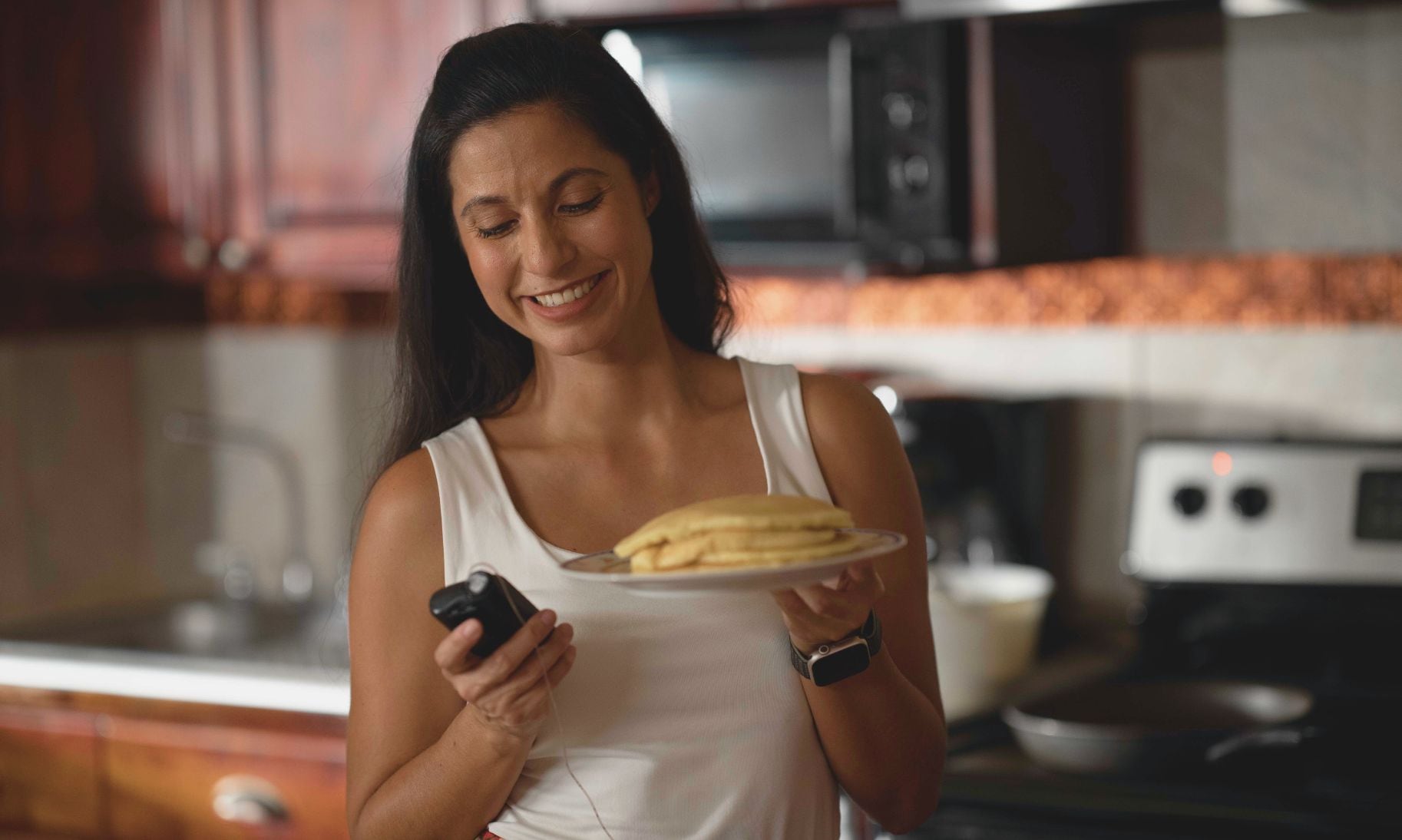MiniMed 530G with Enlite: Your top questions answered

 Since announcing the news that we received FDA approval of MiniMed® 530G with Enlite on Friday, it's been great to hear so many of you share in our excitement about this new product and critical first step toward a fully automated artificial pancreas. Hearing from you here on The LOOP as well as on Facebook and Twitter, as always, is really wonderful. In addition to sharing enthusiasm for this new technology, you've asked many very good questions. To answer some of these top questions, we've invited a very special guest blogger to The LOOP - Mark O'Donnell. As vice president of regulatory affairs here at Medtronic Diabetes, Mark has been instrumental in partnering with the FDA in order to allow us to bring this groundbreaking new technology to the U.S. diabetes community.
Since announcing the news that we received FDA approval of MiniMed® 530G with Enlite on Friday, it's been great to hear so many of you share in our excitement about this new product and critical first step toward a fully automated artificial pancreas. Hearing from you here on The LOOP as well as on Facebook and Twitter, as always, is really wonderful. In addition to sharing enthusiasm for this new technology, you've asked many very good questions. To answer some of these top questions, we've invited a very special guest blogger to The LOOP - Mark O'Donnell. As vice president of regulatory affairs here at Medtronic Diabetes, Mark has been instrumental in partnering with the FDA in order to allow us to bring this groundbreaking new technology to the U.S. diabetes community.
Hello LOOP readers. First, thank you so much for sharing your comments and questions with us - whether it's by giving us a call, talking to your local Medtronic representative or through social media channels. Hearing your stories and excitement for MiniMed 530G reminds me and everyone else at Medtronic the reason we all come to work every day - to improve the lives of people with diabetes. It's also great to hear your thoughts and concerns. Speaking of which, here are my answers to the most common questions you've heard so far.
Q. Can my child (under the age of 16) use the MiniMed 530G system with Enlite? Why not?
A. MiniMed 530G with Enlite is currently not approved for use in children under the age of 16. I can certainly understand how this can be frustrating or confusing for many parents of young children with diabetes. Please know that we are actively pursuing the clinical evidence to support an indication for children 2-15 but can't provide a timetable for when we'll have such an indication. In the meantime, I encourage you to talk to your child's doctor. Like with any aspect of your child's diabetes care, your physician is the best person to tell you what the best diabetes technology is for your child.
I also want to emphasize that Medtronic is extremely committed to pursuing this clinical evidence. The FDA has already approved two additional studies in children (2-15) to determine the appropriateness of this therapy in children under 16 and the studies will begin enrolling participants soon.
Understandably, this leads us to the next question:
Q. Why weren't children included in the clinical data Medtronic submitted to the FDA?
A. Our approval for the system was based on a clinical study of people with diabetes above 16 because the study protocol (its design and implementation) was very challenging. Participants were forced into hypoglycemia through exercise and kept there. It was determined that this would not be appropriate for children. The study was an "in-clinic" study, which took place in a controlled setting with the support of a healthcare team.
Now that the product has been approved, we can conduct an "in-home" study that measures the safety and effectiveness of the product as participants use it in "real-world" settings, which is more appropriate for children.
Q. How long have you known about this labeling and its impact on the New Technology Guarantee program?
A. Many of you are familiar with the New Technology Program we started last December. Medtronic customers who purchased a MiniMed Revel insulin pump and CGM during this time were offered a free upgrade to our new technology (the MiniMed 530G) once it became available. We're working hard to provide the new product and training to these customers age 16 and over as quickly as possible.
However, since the MiniMed 530G system was not approved for children under the age of 16, we are not allowed to promote this device for those children. That means we cannot satisfy and ship the MiniMed 530G under the New Technology Program. I encourage you to talk to your healthcare team about the best option for your child.
I understand this is frustrating and disappointing. However, during the New Technology Guarantee program we didn't know what the final indications for use was going to be. (We get these final indications for use from the FDA when we get product approval.) While we did know that our study had only involved adults and children 16 and over, we didn't know for sure what the labeling would be given that the MiniMed Revel system is indicated for children age 7 and older.
Q. How can my child participate in the upcoming clinical studies?
A. This is a great question and one we love to hear. Participating in clinical trials is really valuable to the diabetes community. If it's something your family is interested in exploring, you can check www.clinicaltrials.gov, which is where the studies will be posted when the trial sites begin enrolling in a few months. The LOOP team also tells me that they'll post updates here once enrollment has begun.
Q. Why did you call the MiniMed 530G an "artificial pancreas" system?
A. At Medtronic our goal is to develop a fully automated artificial pancreas for people with diabetes - a system that will be designed to automatically deliver the amount of insulin you need with very minimal interaction from you. We are not there yet, even with the MiniMed 530G system. However, the MiniMed 530G system is a critical first step on the journey toward that goal. With Threshold Suspend, it is the first FDA approved device that can stop insulin delivery temporarily if a sensor glucose value reaches a preset low level and the patient doesn't react to the alarm. This is the first system that takes action based on sensor glucose readings and the first product approved under the FDA's new category Artificial Pancreas Device System - Threshold Suspend.
This is one of three categories designed by the FDA as types of artificial pancreas device systems. You can read about all three categories here. This is where the language "artificial pancreas device system" comes from.
The fact that the FDA has clearly defined these three categories is great news for the diabetes community, as it gives us a path forward in developing iterative steps toward a fully automated artificial pancreas system. Those iterative steps are important because a fully automated system is not going to arrive suddenly. Our plan is to step-by-step develop innovative technologies with increasing levels of automation in order to advance to our ultimate goal - a fully automated artificial pancreas system.
If you have any additional questions, please feel free to share them in the comments and the LOOP team and I will be happy to answer as much as we can.
IMPORTANT SAFETY INFORMATION
Medtronic Diabetes insulin infusion pumps, continuous glucose monitoring systems and associated components are limited to sale by or on the order of a physician and should only be used under the direction of a healthcare professional familiar with the risks associated with the use of these systems. MiniMed 530G with Enlite is intended for the delivery of insulin and continuous glucose monitoring for the management of diabetes mellitus by persons 16 years of age or older who require insulin.
Pump therapy is not recommended for people who are unwilling or unable to perform a minimum of four blood glucose tests per day. Insulin pumps use rapid-acting insulin. If your insulin delivery is interrupted for any reason, you must be prepared to replace the missed insulin immediately.
The information provided by CGM systems is intended to supplement, not replace, blood glucose information obtained using a home glucose meter. A confirmatory fingerstick is required prior to making adjustments to diabetes therapy. MiniMed 530G with Enlite is not intended to be used directly for preventing or treating hypoglycemia but to suspend insulin delivery when the user is unable to respond to the Threshold Suspend alarm and take measures to prevent or treat hypoglycemia themselves.
Please visit MedtronicDiabetes.com/isi for more details.




Blog comments
I have stopped using my CGM due to frustrating gross inaccuracy's, in BG levels & alarms such as Cal Error, etc.. The new system advertises 31% better accuracy. That doesn't sound overwhelmingly convincing that the new system will work much better, therefore I am hesitant to go with the new system. My concern is I will invest in the new system & end up not using the CGM, as I am doing now.
With the CGM, does it become inaccurate over time or when it "goes bad", does it just stop working, entirely? It seemed to be accurate when I first got it...or was it my imagination?
I did briefly speak with a rep today (after 1.5 hrs on hold) & was told there is a program to assist in the out of pocket cost, since my MM is still within the 4 yr warranty period. Will this offer stand up until the 4 yr period (Apr 2016) is up & my insurance would then cover? Or does the amount I would pay, increase/decrease as my 4 yr date approaches? Or is there a limited time this is program is in effect?
If you feel my questions are better addressed over the phone, I would be glad to provide my number, via email.
Thank you!
Hi Patricia. I am sorry you’ve had a frustrating experience using your current CGM. Our new Enlite sensor includes many advances compared to our previous sensor, such as improved comfort and accuracy, which could enhance your experience. You can also find information about Enlite accuracy here: http://www.medtronicdiabetes.com/treatment-and-products/enlite-sensor. I will have a member of my team reach out to you soon to discuss your concerns and insurance coverage options.
Please don't be fooled by this 530g with enlite system, the salesperson fail's to tell you that the cost now triple's from what you was paying. You now have to check your BG 8 to 10 times a day to keep the alarms from going off and giving you false reading's throughout the day and nights. I have now turned the enlite system off for the cost of your test strips and the enlite sensors after insurance (BCBS) pay's there part I now have to pay out of pocket 160.00 dollars more a month.
BIG RIP OFF I don't recommend this system
Hi Jerry. I am sorry to hear you’re disappointed with your sensor, and concerned about the costs. Insurance coverage can vary by plan but I can understand how this could be frustrating. We do offer payment plans and financial assistance to those who meet certain requirements. I will have someone from my team contact you to try to help with the sensor accuracy issues you’re experiencing as well as discuss your coverage. Please let me know if there’s anything else I can help you with.
I just recently got the CGM with the pump and after my first sensor change it is giving me false hi and lo alerts. For example last night it said I was 48 and when I tested it was 141. Today it alerted that I was high at 295 and when I tested it was 202. Did I do something wrong? Please advise. Thank you.
Hi Amanda. Sorry to hear you’re experiencing false hi and low alerts. I will have someone from my team connect with you to try and help. Please let me know if there’s anything else you need help with.
I just started the new 530g about two weeks ago. The problem I have experienced is the sensor coming off. I was told by the minimed tech that the best place for the sensor is on the stomach area. Is anyone else experiencing this problem? I called Medtronic today and explained the problem and the rep asked me if I sweat? I was thinking to myself, shouldn't this have been something the R&D department researched and developed? Duh......
Thanks,
Steve
Hi Steve. Sorry to hear you’re having trouble with your sensor staying on. Different climates, skin lotions and creams, different clothing or just the way someone’s body reacts may affect the tape adhesion.
I will have someone from my team contact you to try and help. In the meantime, here are Enlite sensor taping tips you may find helpful: http://www.medtronicdiabetes.com/res/img/pdfs/Enlite-taping-tips_8.5x11…. Please let me know if there’s anything else I can do to help.
It's really a great and helpful piece of info. I am happy that you simply shared this useful info with us.
Please stay us informed like this. Thank you for sharing.
Thanks for your feedback, Astrid. Glad you found this information helpful. We’re committed to delivering content that is important to our community, so keep checking back and let us know what content you’d like to see!
I am reading all the comments about this pump. I want to know if you can use this pump without the sensors? I don't want all that stuff. It's one more thing you have to worry about coming off!! So can I just get the pump by it self?
That’s a great question, Carol. We strongly believe that the MiniMed 530G with Enlite sensor provides the greatest clinical benefit to people with diabetes when used as a system, which is why we’re offering it as a system. If you’re interested in finding out more about the benefits of CGM, send me an email at loopblog@medtronic.com, and I’ll connect you with someone on our team.
I recently received the new MiniMed 530G with Enlite sensor. The first two times I used the sensor it did what I expected. However, recently my sensor has give me information that was way off the mark. For example, my sensor alerted me that I had a reading of 65. I tested and discovered that my reading was 225. During the night it alerted me that I was having a high reading of 180. I got up, tested, and found that I was having a low. Two times it gave me a CAL ERROR reading. Not sure why this is happening??
Frank, I’m sorry to hear you’re having issues with your sensor. I will have someone from my team contact you to try and help.
Just started using the 530g. Working as expected when sensor and pump are within about 6 inches of each other. I thought the range was 6 ft. but doesn't seem to be the case as if my pump is more than half a foot away from sensor keep getting lost sensor error. Also, curious as to how long a fully charged sensor should last. Seems my sensor needs charged every day, that seems like a short time. Is it possible by sensor is defective not holding a charge? My only concerns with this system is the sensor range and the amount of time sensor needs charged. Thanks for any feedback or help.
Matt, I’m sorry you’re continuing to experience a Lost Sensor error. If the sensor has been inserted properly and you’re still getting a Lost Sensor alert, it could be due to insecure taping. Here are additional taping options you may find helpful: http://www.medtronicdiabetes.com/res/img/pdfs/940M11776-013-Additional-….
We recommend recharging your transmitter after each sensor use, so every 6 days with the Enlite sensor. After 3 days of usage, charging time is less than 20 minutes. After 14 days of use, charging time is less than 2 hours. More than 14 days of usage, charging time is less than 8 hours. You may find this link helpful for additional transmitter charging information: http://www.medtronicdiabetes.com/customer-support/sensors-and-transmitt….
I will have a member of my team reach out to you to try and help you out. Please let me know if there’s anything else I can help you with.
Would you please let me know which bg reading I'm to rely on. The pump goes off saying I'm low but the meter is saying I'm within normal range. This thing keeps going off during the night and I'm getting up to check meter readings and they are way off. Please let me know something so I can sleep at night.
Thank you
Kay, I’m sorry to hear this. The MiniMed 530G system is not intended to be used directly for making therapy adjustments, but rather to provide an indication of when a finger stick may be required so you should rely on your BG meter and rely on your CGM to show you sensor glucose trends. I will have someone from my team follow up with you to discuss this in more detail. In the meantime, this video might help http://bit.ly/1jPm5JJ.
How much insulin does the pump 350 hold
Hi Larry, MiniMed insulin pumps use reservoirs that hold either 180 units or 300 units of insulin.
Pagination
Post a new comment
Required fields are marked *